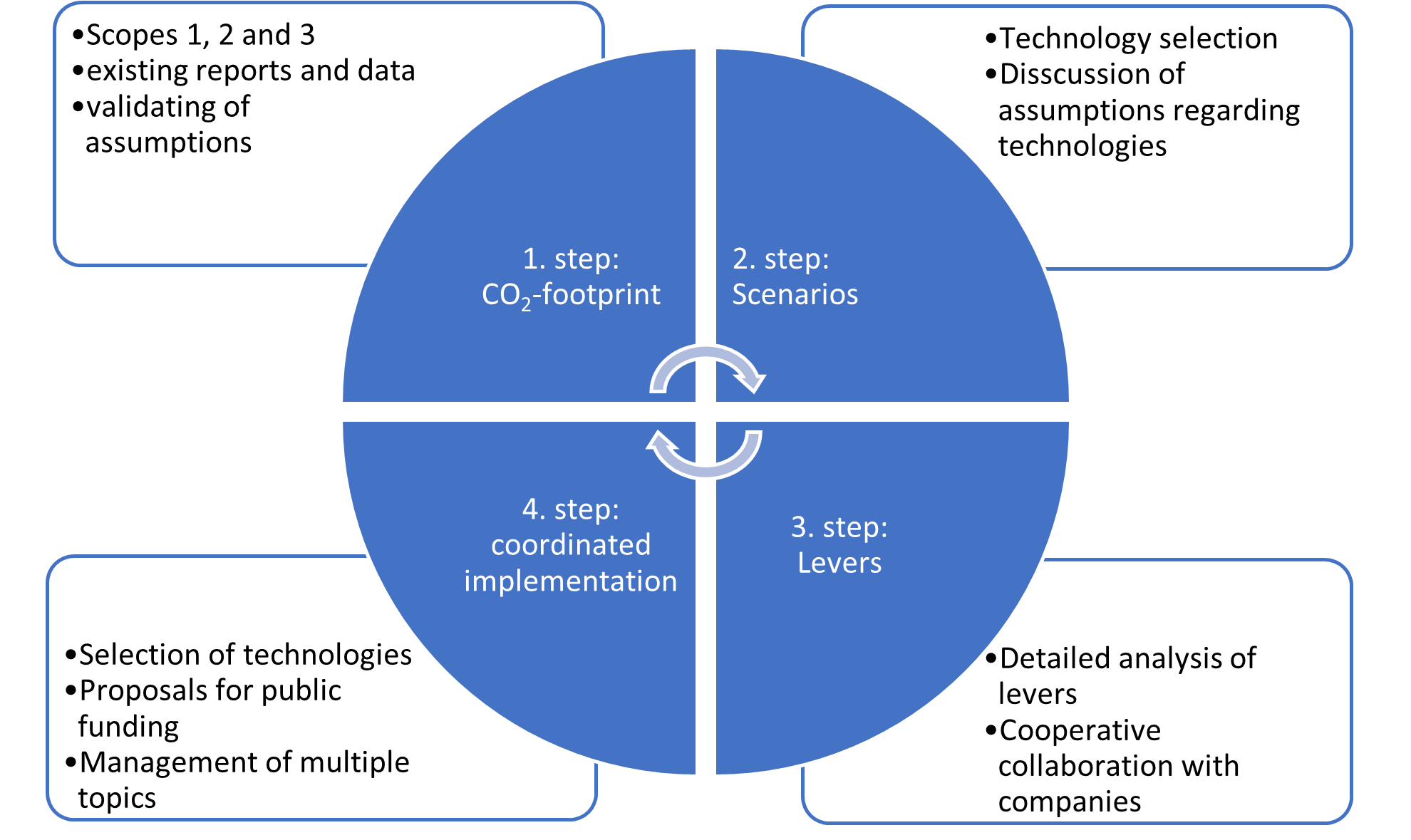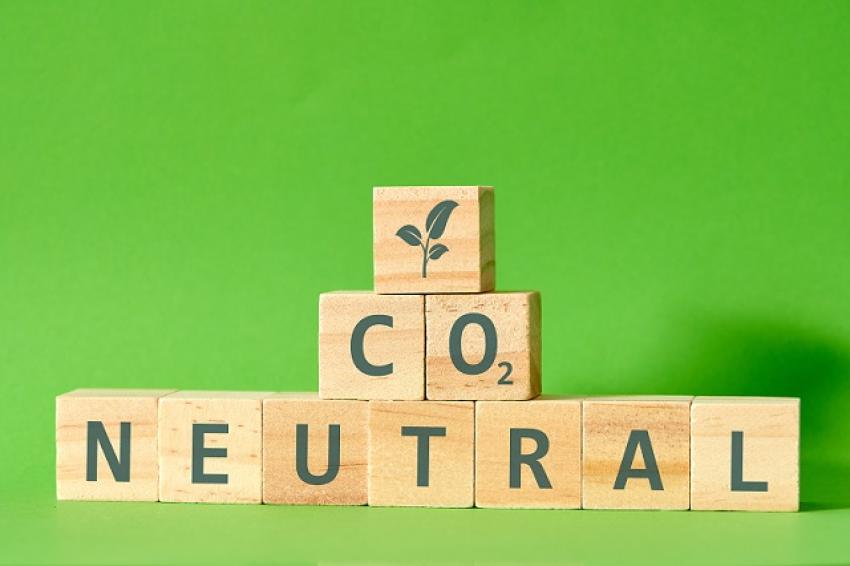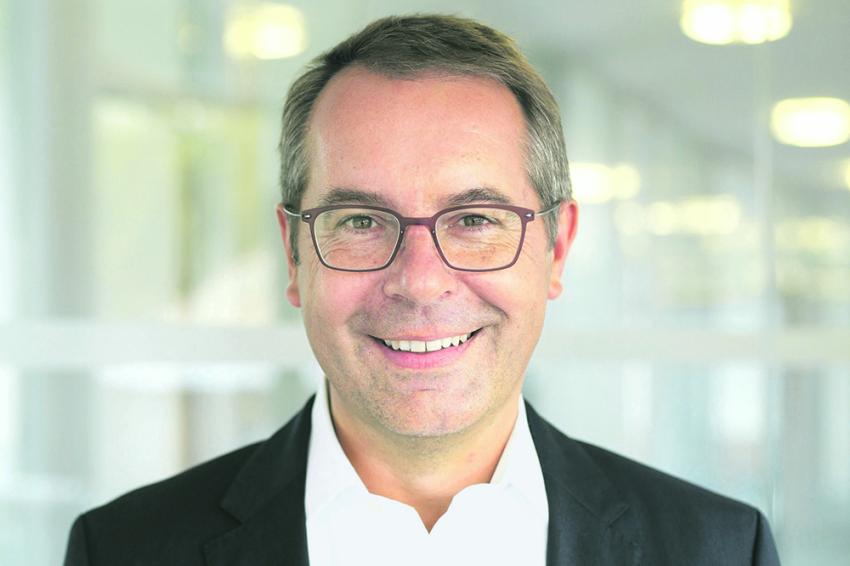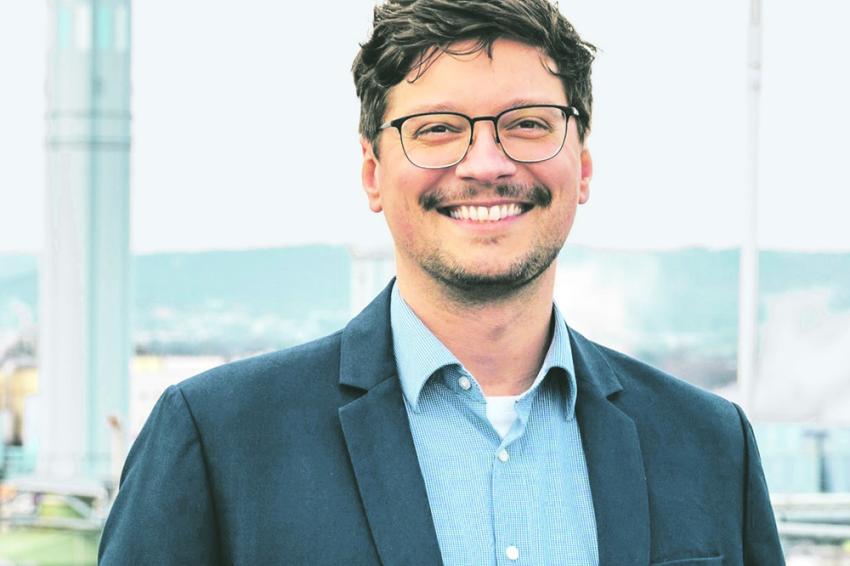CO2-Neutral Industrial Parks
Provadis University Makes Recommendations For Transformation Pathways
How can an industrial park develop the transformation path to CO2 neutrality? What steps need to be taken? And how did the cluster "Process4Sustainability: Cluster for a climate-neutral process industry in Hesse" proceed to develop a roadmap for transformation? What are our lessons learned?
The challenge: Globally positioned companies meet the expectations of regional stakeholders.
Industriepark Höchst, with its 90 companies, has a successful history spanning more than 160 years, largely associated with the use of fossil fuels. Currently, more than 120 plants are producing here. Many of the producers have developed global climate strategies for their operations, with dedicated CO2 reduction targets for 2030 and 2045/2050. Some of the companies have their corporate headquarters abroad — Sanofi in France, Celanese in the USA and Kuraray in Japan — and concretize the globally applicable reduction targets in different ways for their respective production sites. These site-specific targets of the corporations are set against the expectations of regional stakeholders in the city, state, federal government and EU (e.g. the city of Frankfurt with its declared goal of climate neutrality in 2035). There are potential interrelationships between corporate climate strategies locally - if all companies rely on electricity from renewable sources or on green hydrogen in the short term, provision and infrastructures should be adapted accordingly. Changes in products can also have an impact on other players through the connected structures at the site. The industrial symbiosis on site is therefore affected.
To take advantage of opportunities and avoid bottlenecks, companies therefore need to coordinate their efforts. Such coordination is taking place in the cluster "Process4Sustainability: Cluster for a Climate-Neutral Process Industry in Hesse" based at Industriepark Höchst. The cluster's goal is to illuminate an economically successful transformation path for the industrial park and achieve it together through coordinated action.

Success Factors for the Development of a Transformation Path
Step 1: Determine the carbon footprint of the site
The first step is to achieve a common understanding of the carbon footprint of the site. The determination of Scopes 1 (direct emissions) and 2 (indirect emissions from energy supply) is already mandatory for individual companies. This data is included in company-specific CO2 reports. In expert discussions with the companies, the existing data on Scope 1 and 2 and the different company-specific reduction targets were determined and discussed. This made assumptions, data and expectations transparent. At the same time, the goal was pursued — in analogy to the work of the German Chemical Association (VCI) — to also identify Scope 3 emissions of the companies and thus, in total, of the site in its entirety. The reporting of Scope 3 emissions is currently not mandatory for the site; however, the question should be answered in this way: What are the highest possible emissions for which the site is responsible? To this end, the quantities of raw materials and energy consumed in the production facilities first needed to be determined. And finally, the highest emissions possible in the course of value creation also had to be calculated. As a result, the status quo for the site was determined as a first approximation. The result: 87 % of the site's CO2 emissions can ultimately be traced back to only four raw materials. The optimization considerations must therefore address the question of which levers can be used to change these four emission sources.
Lessons learned: Obtaining and validating data is by no means trivial. Boundaries and assumptions vary between companies. Questions about the system boundary need to be discussed and decided. But: Some of the data on raw materials used and thus on potential Scope 3 emissions can be drawn from the operational emissions reports that have to be submitted annually to the regional council. These values were strategically evaluated by the cluster for the first time with regard to CO2 relevance.
Step 2: Identify levers and develop scenarios
Knowing the CO2 footprint and the potentially relevant levers, scenarios for the transformation to CO2 neutrality were developed in a second step. This was done together with experts from Dechema. As a result, scenarios for the combination of different technologies (initially mainly green electricity, H2 and heat pumps) were isolated and illuminated in a technology mix: in particular, the magnitude of the required green energy and the corresponding dependencies in the infrastructures became clear. It also became apparent at what point in time investments would have to be made in which technologies and to what extent.
In the next step, the scenarios were detailed following discussions with experts and further specified taking into account literature and current technical developments. One important result was the identification of 12 technological levers that are specifically relevant for the site.
Lessons learned: Depending on the number of CO2 sources, the selection of CO2 reduction levers to be highlighted varies in complexity. The more sources, the more potential levers, the more complex the analysis task. In the example of Process4Sustainability, "only" 12 levers were ultimately taken into closer consideration, which make the complete list for the site.
Step 3: Examine levers and ensure leadership
In the third step, the relevant levers are now examined by the companies using various assessment filters: What is the technological and regulatory maturity of various technologies? Which technologies should be focused on? Which consortia are relevant? Which technologies can contribute to achieving CO2 reduction targets in which timeframe? And: which cluster company has which interests in which technology? Who would like to take which role (challenge owner for a topic, supporter, neutral) in working on which lever?
Lessons learned: Investigating the levers is an iterative process that requires bilateral coordination between the companies and the cluster office as well as direct discussion between the various cluster partners. Here, it is particularly important to combine the knowledge from the central departments of the companies with the local site specifics. There are a number of very good elaborations on the development perspectives of the various levers at the European level (e.g., by A.SPIRE).
Step 4: Approach implementation in a coordinated manner
The next step is to translate the defined topics into concrete work plans. These are processed either by the cluster office, individual companies or cluster partners (such as Dechema) or in joint cross-company project teams. The close dovetailing of activities is particularly important here, as the various projects and the specific networks that exist in each case can be very mutually beneficial. This also applies particularly to the positioning of the cluster in publicly funded projects, which is important for the funding of technologies themselves with comparatively low levels of technological maturity. These new technologies can be upscaled in a short time at established industrial parks. By using these technologies, the necessary knowledge for infrastructure conversion can then also be gained at the industrial parks at the same time.
Lessons learned: In this phase, the stringency of the project organization is crucial. This must be designed specifically for individual projects in terms of efficiency and networked across projects. All those involved must be aware that the field is still developing, particularly in the case of innovative technologies — individual approaches and companies that appear promising today may therefore disappear from the market again.
Authors: Hannes Utikal and Marcel Loewert, Center for Industry and Sustainability, Provadis School of International Management and Technology, Frankfurt, Germany
Process4Sustainability:
Cluster for a climate-neutral process industry in Hesse
On the initiative of site operator Infraserv Höchst, Provadis University has launched the project "Process4Sustainability: Cluster for a Climate-Neutral Process Industry in Hesse" with funding from the state of Hesse and the EU and is managing it in cooperation with several producing companies located in the industrial park and other key innovation partners. Process4Sustainability aims to support companies in their transformation process toward climate neutrality. The aim is to identify suitable technical solutions for reducing CO2 emissions that are also economically feasible and strengthen the competitiveness of the chemical and pharmaceutical industry in Hesse, Germany and Europe. Sustainability and climate protection in the process industry also offer opportunities for new business models - the cluster is also tasked with identifying such opportunities and bringing together innovation partners.







